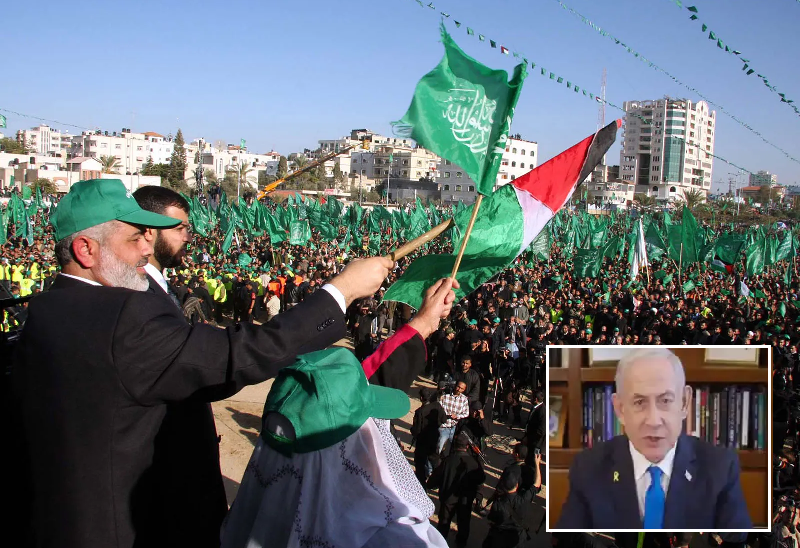
- The ceasefire deal between Hamas and Israel marks a significant development in the ongoing conflict that has persisted since October 2023.
- At the forefront of this agreement is hostage and prisoner-swapping arrangements.
- The ceasefire is still not guaranteed after the initial phase comes to pass; both parties must also prove their commitment to realizing its terms for the ceasefire to evolve into a more permanent arrangement.
- If the phased ceasefire between Israel and Hamas holds, it constitutes a turning point in a historically sensitive conflict that has dealt bitter blows to both parties.
The ceasefire deal between Hamas and Israel marks a significant development in the ongoing conflict that has persisted since October 2023. This agreement, reached in January of 2025, aims to establish a pause in hostilities and facilitate the release of hostages held by both sides, while also addressing the dire humanitarian conditions in Gaza. The complexities of the deal reflect the dynamics of the Israeli-Palestinian conflict, and its success hinges on the adherence to its terms by both parties.
The history of the Israel-Hamas conflict is well dates back to the mid–20th century, after the formation of the State of Israel in 1948. Most countries accepted the United Nations partition scheme to create two separate Jewish and Arab States only the Jewish state accepted it while the Arab nations did not. This resulted in several wars, including the Yom Kipper War in 1973 and then the Camp David Accords in 1978, which ended the bitter relationship between Israel and Egypt. The idea of the Oslo Accords in 1993 was to create peace between Israel and the Palestine Liberation Organization (PLO) but the organization of Hamas, which emerged in 1987, had been disrespecting those agreements and didn’t recognize Israel. The current phase of conflict started on 7th October 2023 when Hamas fired rockets at Israel and killed over 1,200 Israelis before Israel retaliated vigorously. Military operations following the assassination in the Gaza Strip, resulted in a disastrous humanitarian impact more than 64,000 Palestinians killed virtually everywhere devastated. About 1,7 million Palestinians fled for their lives, this humanitarian catastrophe made people all over the world demand for ceasefire.
The ceasefire agreement is divided into three stages, and the first one is expected to help save the lives of those who lived under constant attacks in Gaza for more than a year. This ceasefire means a stop to all hostile actions, the Israeli forces’ demilateralization from populated places but their presence on the Gaza-Egypt border (Philadelphi Corridor). This pulling out also has strategic importance since will facilitate the return of Palestinian civilians to their homes. It guarantees a massive flow of humanitarian assistance into Gaza where people have lived in terrible conditions owing to violence. Humanitarian organizations are expected to provide all the necessary products and even medical services during this period.
At the forefront of this agreement is the hostage and prisoner-swapping arrangement. During this initial phase of the hostage-taking campaign, Hamas has agreed to free 33 of its hostages which includes women, children and the elderly. Indeed, included in this release will also be American hostages. The timing of these releases is planned; three female Israeli civilian hostages should be released as soon as the ceasefire starts, and more releases are expected in subsequent days. Consequently, this agreement entails the freeing of some 1000 Palestinians arrested sub-Oct 8, 2023, who would not have participated in the attack by Hamas on Israel. The first part of the ceasefire agreement is intended to allow civilians in Gaza a brief respite, living as they have for over a year in fear of bombardment. In the framework of the agreement, an unequivocal cessation of hostilities is provided, which involves the use of Israeli troops leaving the territories inhabited by the population while occupying the Gazan-Egyptian border strip called the ‘Philadelphi Corridor’. Such tactical pullout helps keep non-combatants out of harm’s way and facilitate the revival of displaced civilians, a menace that has plagued north of Gaza. Equally important, the agreement anticipates the delivery of large amounts of humanitarian assistance to solve the matter of catastrophic living conditions caused by the violence that residents experienced. The negotiations have been long and winding to reach this kind of deal.
Over 411 days, mediators from different countries have sat together to set terms that are pivotal in ensuring long-term peace. The first of such ceasefires was declared in November 2023 and hardly lasted a week, and it was fraught with quite significant objective deficiencies, one of which was the absence of clear rules regarding the enforcement of the ceasefire agreements. However, this new deal has incorporated a particular system of checking compliance in partnership with the United States, Egypt, and Qatar. This oversight mechanism is designed to establish that neither party infracts the terms of the ceasefire agreement and in a way enforces good faith.
The present phase is supposed to last around six weeks, while the outlining phases will be progressively worked out and negotiated concurrently. Phase Two is expected to involve further hostage releases and the eventual full withdrawal of Israeli forces from Gaza. President Joe Biden has indicated that this phase would also commence plans for reconstruction in Gaza, crucial in offering Gaza some respite from the extensive damages it has suffered from hostilities. The final phase would then involve bringing back the remains of any remaining deceased hostages to their families and the formulation of a comprehensive rebuilding plan for Gaza. Nonetheless, no one would want to raise hostilities again by intransigence, and uncertainty characterizes the long-term potential of this deal.
The ceasefire is still not guaranteed after the initial phase comes to pass; both parties must also prove their commitment to realizing its terms for the ceasefire to evolve into a more permanent arrangement. Should Israel succeed in recovering all hostages, this, in other words, may open space for negotiations but also shows how fragile the nature of trust that both parties have. The situation remains precarious as both sides navigate their respective political landscapes and public sentiments regarding concessions made during negotiations. Prized by neither party is the further guarantee that this ceasefire will extend past its original phase. A great deal of internal political opposition within Israel can act to strengthen or undercut Prime Minister Benjamin Netanyahu’s coalition government, with even his own far-right factions within the administration being deafening in their oppositional speech to concessions of some kind to Hamas. So strong and deep-rooted is the mistrust that endeavouring towards sustainable peace becomes even more difficult.
If the phased ceasefire between Israel and Hamas holds, it constitutes a turning point in a historically sensitive conflict that has dealt bitter blows to both parties. Hope remains alive for the families of hostages and victims of the humanitarian crisis in Gaza. The ceasefire would be unsuccessful unless both sides adhere to the said ceasefire and show sincere commitment to making peace in a lasting way. With the negotiations now progressing to the next phases, it would be imperative for international stakeholders, including the United States, Qatar and Egypt, to establish dialogues and ensure humanitarian requirements are met that speak to the underlying political grievances fueling the decades-long conflict. Only in commitment to this long-haul process may there be hope for the future, where Israelis and Palestinians can live without encumbrance amidst historical grievances.
References:
- Suarez Sang, Lucia, and Haley Ott. “Israel and Hamas Ceasefire Deal Takes Effect as First 3 Hostages Are Released and Returned to Israel.” CBS News, January 19, 2025. https://www.cbsnews.com/news/israel-hamas-ceasefire-hostage-release-gaza-war-takes-effect/.
- Socolovsky, Jerome. “3 Freed Hostages Arrive in Israel as Tenuous Ceasefire With Hamas Holds.” NPR, January 19, 2025. https://www.npr.org/2025/01/19/g-s1-43571/ceasefire-goes-into-effect-in-gaza.
- Staff, Al Jazeera. “Timeline: The Path to the Israel-Hamas Ceasefire Deal in Gaza.” Al Jazeera, January 19, 2025.https://www.aljazeera.com/features/2025/1/19/timeline-the-path-to-the-israel-hamas-ceasefire-deal-in-gaza.
- Duggal, Hanna, and Marium Ali. “Israel-Hamas Ceasefire: What’s Left of Gaza and Its People?” Al Jazeera, January 19, 2025. https://www.aljazeera.com/news/2025/1/16/israel-hamas-ceasefire-whats-left-of-gaza-and-its-people.
- https://edition.cnn.com/world/live-news/israel-hamas-gaza-ceasefire-hostages-01-16-24/index.html
- BBC News. “How Did We Reach the Israel-Hamas Ceasefire Deal in Gaza?,” January 19, 2025. https://www.bbc.com/news/articles/cvg4ryde7q5o.
- “3 Freed Hostages Arrive in Israel as Tenuous Ceasefire With Hamas Holds.” NPR, January 19, 2025. https://www.npr.org/2025/01/19/g-s1-43571/ceasefire-goes-into-effect-in-gaza.
- Bellamy, Daniel. “Israel-Hamas Ceasefire Begins, Raising Hope That 15 Months of War Will End.” Euronews, January 19, 2025. https://www.euronews.com/2025/01/19/ceasefire-delayed-israel-says-after-hamas-fails-to-release-hostages-names.
- https://www.timesofisrael.com/full-text-of-the-hostage-ceasefire-agreement-reached-between-israel-and-hamas
Shrivara Mahajan is pursuing an International Relations major with a minor in Public Policy at OP Jindal Global University. He is a Senior Intern at the Jindal Centre for the Global South and has priorly interned with The Spread Smile Foundation. Views expressed are the author’s own.
